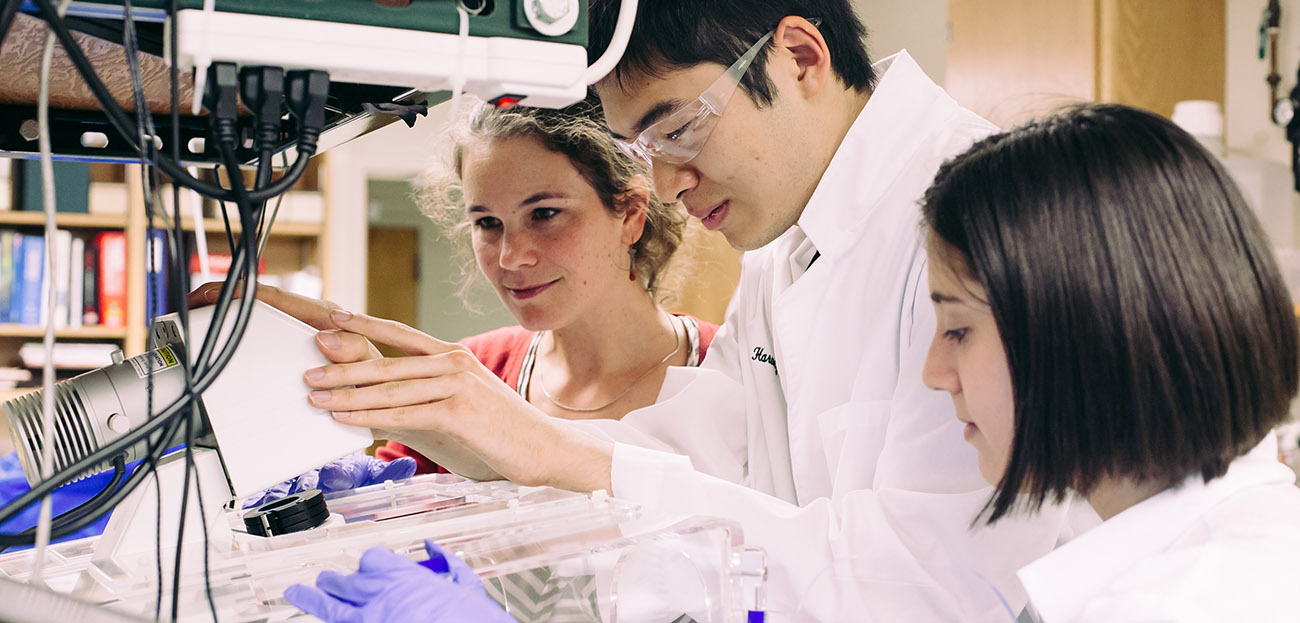HMC Students Make Physics Discovery
January 17, 2018
Science and serendipity are old pals, meeting throughout history when people intending to do one thing realize they’ve accidentally discovered another. This was the case for Harvey Mudd physics researchers, resulting in the discovery of “optical blasting,” which allows people to internally sculpt colloidal crystals and could lead to new ways of modifying material properties.
Physics professor Sharon Gerbode and her students, Caitlin Cash ’18, Jeremy Wang ’17, Maya Martirossyan ’17, Kemper Ludlow ’18, Alejandro Baptista ’18, Nina Brown ’19, Eli Weissler ’19 and Jatin Abacousnac ’19, share their findings in “Local melting attracts grain boundaries in colloidal polycrystals” published recently by Physical Review Letters.
The first discovery happened two years ago, when Wang and Martirossyan were using an existing method of creating disorder inside a colloidal crystal, intending to recreate results Gerbode had produced before to use in a new experiment. Had everything gone as planned, the students would have created a colloid, a mixture of fluids and particles, which they would have been able to manipulate with a laser beam, grabbing the particles and moving them around inside the colloid.
“When they were creating the colloid, mixing together the fluids and the particles, they accidentally made the wrong mixture of fluids, so that instead of light bending to the left when it enters the particles, it bends to the right,” Gerbode explains. “So instead of trapping the particle and pulling it in to the focus of the laser beam, the light repels particles and pushes them away from the laser region.”
Optical blasting was born. “It took me a day or so to realize that this is way more useful than what we’re trying to do,” Gerbode says. “This can be extremely useful, and it was accidentally invented by Harvey Mudd students.”
The second discovery, realizing optical blasting’s ability to sculpt grain boundaries within a colloid, was also an accident. Wang had gone into the lab late one summer night to work on an unrelated project. He got tired and decided to take a break by playing with optical blasting for fun. That’s when he discovered that optical blasting attracted grain boundaries, which are the interfaces between the colloid particle beads. He started drawing smiley faces within the colloid. When Wang’s labmates checked the online Gerbode Lab log Aug. 8, 2016, they found this entry from the early morning hours:
“The Hubris of Man: MUAHAHAHAHAHA! AFTER HOURS OF EXPERIMENTATION I HAVE DONE IT. WITH THESE TWO HANDS OF MINE AND AN 800 MILLIWATT LASER, I HAVE CREATED LIFE. I HAVE CREATED ART. I HAVE CREATED . . . lots of grain boundaries.”
An image of the work followed the entry; colloid particle beads shaped into two circle “eyes” and a wide “smile” by neatly drawn grain boundaries.
“Seeing that this wasn’t just a small way to create tiny bumps in grain boundaries but rather a way to sculpt new crystallites and create them in whatever shape you want was a very exciting discovery,” Gerbode says.
During the following year, Gerbode and her students, with Cash taking the lead, worked diligently to study the physics of why this sculpting phenomena worked and how to quantify it. The paper, which is receiving a lot of attention from the physics community, explains the research, outlining why optical blasting attracts grain boundaries.
“The reason it’s getting attention now is partly because of the physics of why it works, but mostly because it works so well and there are such exciting implications for what can be done with it,” Gerbode says. “A lot of people make a living creating materials made of colloidal crystals. The presence of grain boundaries in these materials can be desirable or problematic. As far as we know, this is the first publication demonstrating a way to actually get in there and change the boundaries.”
Gerbode goes on to explain that the ability to write grain boundaries allows physicists to “tune” the boundaries however they want, affecting the way light propagates in a material and the way a material structure acts. “What’s so cool about our technology,” she says, “is that the physics behind it is quite universal. Now that we have this tool to draw grains, it opens up a whole new direction for experiments in colloidal physics. For example, something no one’s ever been able to do before is create two grains within another crystal and watch how they interact. Do they coalesce? What are the dynamics? Can you pull grains apart? There are theories that no one’s ever been able to test experimentally.”
Gerbode’s excitement about the project is understandable, as is her effusive pride in her students, who, with the publication of their paper, are experiencing as undergraduates something many postdocs hope to achieve. “I respect these students so, so much,” Gerbode says. “They put in a tremendous amount of work. HMC undergrads are exceptional. We all worked our butts off and had so much fun doing it.”
Wang and Martirossyan graduated in 2017, but the remaining students will now have optical blasting as another tool in the Gerbode Lab. Ludlow and Cash are both pursuing thesis projects related to the physics discovered during this process. Everyone is eager to see what comes of new experiments, and, of course, they’re open to serendipitous interventions.
“So much of experimental research is serendipity,” Gerbode says. “One of the hardest parts is recognizing when you’ve found something important. That’s what becoming a scientist has meant for me in my lifetime. It’s not being brilliant and planning everything perfectly. It’s keeping your eyes open and being open-minded.”
